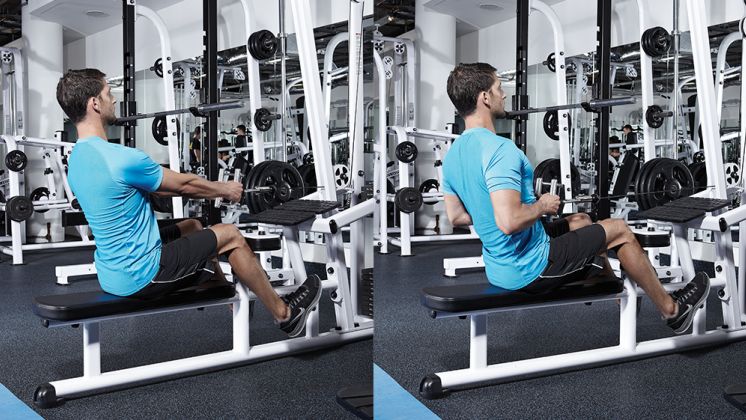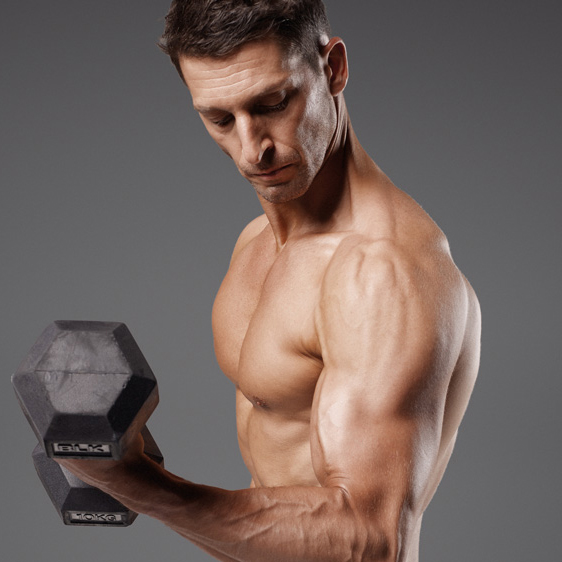How To Do The Cable Row
Get the form right for this move and you’ll reap real gains

If you’re looking to start strength training in the gym your thoughts might naturally drift towards using heavy free weights. However, you shouldn’t underestimate the effectiveness of using a cable machine for your strength exercises, because the way it creates a constant level of tension throughout the movement is a nifty trick that even free weights can’t match.
The cable row is one of the best cable exercises around and very neatly demonstrates the edge this machine has over free weights, because throughout the row movement you work against the same level of resistance so the muscles enlisted by the exercise are worked evenly. Chief among these are your lats, but your rear delts and erector spinae are also targeted, along with your biceps and forearms.
Adding cable rows, and indeed any kind of row, to your regular workout routine is also a wise move if you’re consistently doing pressing exercises. If you bench press frequently, for example, but don’t pay equivalent attention to your back you can build up muscle imbalances that will not only put you at risk of injuries, but also cause your lifting progress to stall. There are few different common versions of the cable row, but the one to start with is the seated cable row. Here’s how to do it.
How To Do The Cable Row
This exercise is most commonly performed using a V-grip attachment. The V-grip attachment is ideal for the inner back muscles such as the rhomboids and mid-traps, but different handles offer a variety of benefits. A wide-grip curved bar targets the rear delts and outer lats more, whereas an underhand EZ-bar will recruit the biceps to a greater extent.
Set the pulley at the lowest rung on the machine. Place your feet on the pads available, if there are no pads, find a step and place that in front of the machine before placing your feet on it.
Begin by having your arms completely outstretched as this move targets the lats and this position best engages the area. Keep your head, back and spine neutrally aligned, with your chest elevated and core engaged. With a small bend in your knees, pull the attachment in towards your body to just below the naval, initiating the move by driving your elbows towards your hips, keeping the elbows in. As the attachment reaches your torso, squeeze your lats and shoulder blades, holding the contraction for 1-2sec. Reverse to the start and repeat for desired number of reps.
See related
- The Best Back Exercises For All Levels Of Gym-Goer
- Superset Back Workouts To Add Major Muscle Quickly
- How To Do The Cable Cross-Over
Common Mistakes To Avoid
Don’t let your technique suffer. Leaning too far forwards reduces the amount of tension on the target muscles.
Get the Coach Newsletter
Sign up for workout ideas, training advice, reviews of the latest gear and more.
Always keep your back straight. Any rounding will only risk injury.
Cable Row Variations
One-arm cable row
Swap out the V-grip for a handle you can hold in one hand to force one side of the body to do all of the work. This is a great way to ensure that your stronger side isn’t doing the bulk of the work, which will just entrench those strength imbalances in your body. Keep one hand by your side as you hold the handle in the other, with your arm outstretched in front of you. Pull the handle to just below your navel, not allowing your torso to rotate, then let the handle return to the starting position under control. Resisting the rotation in the exercise also works your core harder than in the two-arm cable row.
Seated face pull
The face pull is another great cable machine exercise that will bulk up your back and shoulders. It’s usually done while standing, but the seated version of the exercise allows you to perform the move with more weight. Set up a cable machine with a double-rope handle on the high attachment. Hold the attachment in both hands with an overhand grip and your arms outstretched in front of you. Pull the handle towards you so the two rope handles go either side of your face, then return to the starting position, maintaining tension in the cable.

Joe Warner is a highly experienced journalist and editor who began working in fitness media in 2008. He has featured on the cover of Men’s Fitness UK twice and has co-authored Amazon best-sellers including 12-Week Body Plan. He was the editor of Men’s Fitness UK magazine between 2016 and 2019, when that title shared a website with Coach.
- Nick Harris-FrySenior writer









